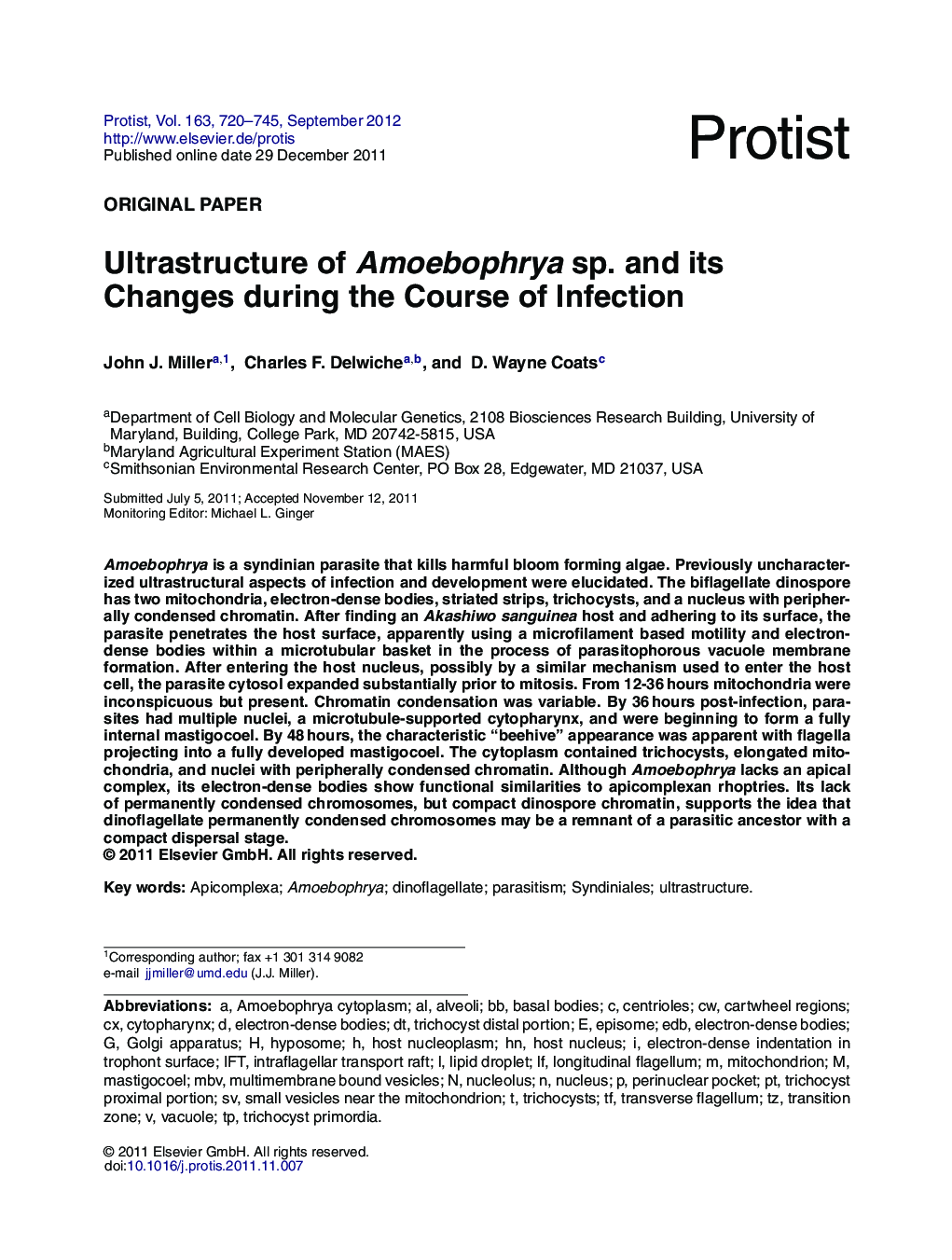| Article ID | Journal | Published Year | Pages | File Type |
|---|---|---|---|---|
| 10879085 | Protist | 2012 | 26 Pages |
Abstract
Amoebophrya is a syndinian parasite that kills harmful bloom forming algae. Previously uncharacterized ultrastructural aspects of infection and development were elucidated. The biflagellate dinospore has two mitochondria, electron-dense bodies, striated strips, trichocysts, and a nucleus with peripherally condensed chromatin. After finding an Akashiwo sanguinea host and adhering to its surface, the parasite penetrates the host surface, apparently using a microfilament based motility and electron-dense bodies within a microtubular basket in the process of parasitophorous vacuole membrane formation. After entering the host nucleus, possibly by a similar mechanism used to enter the host cell, the parasite cytosol expanded substantially prior to mitosis. From 12-36Â hours mitochondria were inconspicuous but present. Chromatin condensation was variable. By 36Â hours post-infection, parasites had multiple nuclei, a microtubule-supported cytopharynx, and were beginning to form a fully internal mastigocoel. By 48Â hours, the characteristic “beehive” appearance was apparent with flagella projecting into a fully developed mastigocoel. The cytoplasm contained trichocysts, elongated mitochondria, and nuclei with peripherally condensed chromatin. Although Amoebophrya lacks an apical complex, its electron-dense bodies show functional similarities to apicomplexan rhoptries. Its lack of permanently condensed chromosomes, but compact dinospore chromatin, supports the idea that dinoflagellate permanently condensed chromosomes may be a remnant of a parasitic ancestor with a compact dispersal stage.
Keywords
Related Topics
Life Sciences
Agricultural and Biological Sciences
Agricultural and Biological Sciences (General)
Authors
John J. Miller, Charles F. Delwiche, D. Wayne Coats,
